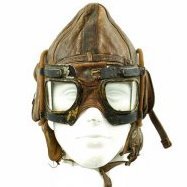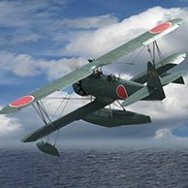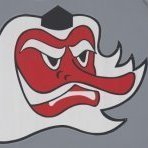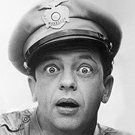Leaderboard
Popular Content
Showing content with the highest reputation on 08/24/2020 in all areas
-
Lukasz posted some pics on their FB page some interesting construction approach as described below https://sk-sk.facebook.com/pg/lukgraph/posts/ Quote from the post Hawker Nimrod Mk.1 coming soon from Lukgraph. The model will be released in two scales 1:32 and 1:48 before this winter, in both scales. The set will be new challenge to us - this time the cast elements will be only: fuselage, wings (upper and lower) and rear fins (vertical and horizontal). Everything else will be directly 3D printed. 3D prints included in the set: All struts, wheels, exhaust pipes, headrest, air intake, radiator, rear support (with additional brass wire). 3D printing is also the whole interior and here it is a novelty - the grate is already assembled as a whole (in one piece). Additionally, seat, instrument panel, control column and all elements inside. The rest will be complemented by photo-etched parts to enhance the interior. The kit will be given without resin casting blocks - they will be removed and the model will be pre-cleaned. Supports for 3D prints - the minimum quantity to guarantee a good print. Windscreen as photo-etched frame + laser cut foil 0.5 mm, secured with double-sided foil ensuring perfect transparency. Painting schemes 2 or 3 in both scales. For now models are ready - just waiting for their turn to be produced. Due to the advanced release technology, the model should be easy to assemble even for people who have not dealt with resin kits. Best Regards Lukgraph Team13 points
-
RAF FG.1 XV571 WILD HARE Phantom Conversion
Azgaron and 11 others reacted to Anthony in NZ for a topic
OK, I have achieved a nice permanent join. I have decided (at this stage) not to glue the rear inner wing sections to the resin part. The reason is because I may have to sort the join out from the lower wing to main fuselage section.....we shall see. It's late, I have to go to bed, that was a bit stressful LOL Cheers guys Anthony12 points -
I am inching along on this build. The small window on the fuselage was glued into place after I placed some rivets on the clear piece. It took two tries to get the hairspray chipping on the prop blades right. I wanted very subtle chipping, mainly on the leading edge of the blades. I also did some hairspray chipping on the spinner and backplate. This was a bit of small test to see what could possibly done on the main fuselage. As for the dark green color, I decided NOT to use the Mr Hobby Kawanishi Green that I specifically ordered for this build. Instead, for the spinner, I used a mixture of two AK Real Color shades: IJN D2 Green Black (RC305) and Luftwaffe RLM 83 Blue (RC327) mixed at a 3:1 ratio. The prop components were also treated to a round of salt fading Here is the completed prop mounted on the engine, posed in my light box. The salt fading, if desired, can be dialed back after application by gently rubbing micromesh on it.10 points
-
Tamiya 1/32 JASDF F-4EJ Black Panthers
F-4Phanwell and 8 others reacted to spyrosjzmichos for a topic
Hello everyone! It's been some time since the last update. After completing the camo painting and initial weathering I moved on to applying the decals. The DXM decals behaved beautifully and conformed to every surface detail without any fuss. I used mr mark softer and setter which I think proved a tad to strong as two hinomarus melted in some spots. Luckily DXM provides two sets of national insignia and I was able to cut small sections to cover the affected areas. The fuselage is covered with a myriad of stencils and warning signs and DXM has tried to combine as many as possible in on decal. However, it still took a good five 2h sessions to finish the whole thing. With the decals in place I then applied a wash using Tamiya's panel line accent and sealed everything with a coat of Vallejo matt varnish. And a few detail shots.9 points -

F-14B Tomcat 'VF-102 Diamondbacks' - corrected Revell kit
Daniel Leduc and 7 others reacted to Starfighter for a topic
Gaps between wings and fuselage? No problem, just cut wedges into your painted model, squeeze, glue and sand... Did I mention that making my life easy is not among my strengths?8 points -
Hi All, the rather time-consuming process of removal of molded kit parts from sub-assemblies and replacement with PE detail, drilling of lightening holes, and other various tweaks continues in preparation for painting. There is still a fair bit more to be added after the first round of painting and assembly. It's all a bit disjointed at the moment but I like to get all my sub-assemblies ready for painting at the same time so I'll pull it all together with a better description of what has been done as we go along. I recently acquired the David Union D360 Elite router and D400 sander with the help of Troy here on LSP - more details of these tools can be found on Troy's vendor thread here. The main advantage of the router is that it is smaller and spins down to a much slower speed than a Dremel so allows precise work without melting the plastic. I've found both tools very useful so far in precisely cutting and grinding off molded kit parts and sanding in preparation for the addition of PE. Moving on to the subject for this build, in addition to the kit schemes I have been considering some other schemes offered by Montex for the Tamiya kit. From the research I have been able to do, all of these aircraft except for tail code 8-13 are A6M5c Hei models, which is curious as the Tamiya kit is the first A6M5 variant. Although it would be cool to do in the future, I'm not up for a conversion for this particular build so the options are tail code 8-13 which was one of the aircraft captured at Aslito airfield on Saipan (wrecked at the time) or, more likely, tail code 210-105 of the 210 Kokutai based at Meiji air base from September 1944. I cannot find any reference photos or information (eg c/n) about the latter aircraft, so if anybody can help there it would be greatly appreciated... Thanks for looking and until next time I'll continue to go cross-eyed on the PE work...8 points
-

1/18 Focke-Wulf Fw190C V18 'Känguruh'
Alain Gadbois and 7 others reacted to airscale for a topic
afternoon folks Hi Craig - thanks for joining Patreon! hope you are enjoying the videos the bull nose was just formed by anneling the metal and running it over the skin panel underneath - by having an overlap the metal forms a nice stiff line when worked into it... Thanks Ray & Two Hands - got the info, very helpful in building up a picture Thanks Matt - no issues, I generally sand the panels flat underneath so there is very little variation / undulation by the time it goes down.. Thanks Wouter - I did use those too to try and work out what others had done to realise the patterns - the HGW ones are gennerally good, but miss quite a few out... So, it’s been a while since an update, simply because I have had to reconfigure our house and move my office / workshop to a smaller room to give what I had snagged as the biggest room in the house as a family room as my eldest daughter is expecting and I am to be a Grandad! They don’t live with us (thank God!), but we will need more space for entertaining so I moved lock, stock & barrel into the old Lounge – also bought a display cabinet I had my eye on as part of the bribe… ..but I have now picked up the tools again, and actually reskinned the wings once I got more accurate images on the patterns from Arthur Bentley… like this one.. ..this meant lots of work in coreldraw to interpret these into scale drawings I could use… ..from these drawings I can create the panels.. Here the printout is stuck to litho and an awl used to make each rivet – coreldraw tells me there are 3712 in the wing so far, so it is tedious stuff.. ..next, the panel is cleaned and burnished flat.. ..then broken away and cleaned up.. ..things don’t always go well… here I was about 300 rivets into a panel before I went straight through it as I went over the edge of the cutting board.. ..I thought that panel may overlap others like some of the other panels, but it seems it is flush where it meets the leading edge.. ..and the wing skinning so far.. ..slowly getting there.. TTFN Peter8 points -
Tamiya 1/32 JASDF F-4EJ Black Panthers
F-4Phanwell and 6 others reacted to spyrosjzmichos for a topic
I was also pointed out some flaws on the metal areas around the tail section. I decided to sand the whole area smooth and repaint it. Think it does look much bette now. The horizontal stabilisers were also slightly reworked. The undercarriage are also done at this stage.7 points -
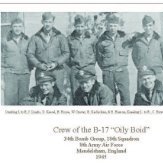
Liberated during quarantine -PB4Y-1
dodgem37 and 6 others reacted to patricksparks for a topic
Put the call letter on as well..7 points -

Liberated during quarantine -PB4Y-1
dodgem37 and 5 others reacted to patricksparks for a topic
finished the forward fuselage camouflage went on to put the "B-10" codes on the nose also added some mission markers, VB-105 based in England used red stars for mission markers, the stars came from "Fantasy Printshop" sheet of assorted red stars. Also cut a set of cowl flaps into 4 sections each and glued them in place to see them in a slightly open position.6 points -
.thumb.png.84c5d3a464f2dd83f0ac37a5aac81ec8.png)
1/32 Bf 109E Adolf Galland
Paulpk and 5 others reacted to Antonio Argudo for a topic
today I worked on the landing struts, after some observation they looked a bit taller and made the belly too separate from the ground giving a light feeling to the aircraft, so i decided the critical decision to do some cirugy and shorten and inserting a steel rod into the struts, gladly in the cut area there is a protector canvas which can be easily sanded and smoot, at the end it worked out and now has that weight feeling it was missing previously, also flaps and ailerons are glued now. cheers comparison between the original length and the trimmed one6 points -
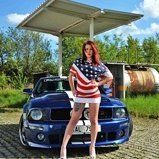
J2M2 Raiden Model 11, CPO Akeshi Ochi, 332nd Kokutai
Rocat and 4 others reacted to Miloslav1956 for a topic
1/32 Hasegawa kit Eduard PE parts HGW seat Belts Riveting & painting mask homemade All colours MRP IJN set / test sample5 points -
.thumb.jpg.f23b2dc356f90ead35d25aa5e3609a95.jpg)
RFI 1/48 AMK MiG-31B
Jeff T and 4 others reacted to Dart_Schatten for a topic
Good day! I've just finished AMK Mig-31B. I used Quinta studio 3D decals for interior and GSh-6-23M gun from Katran. Regards, Sergey Budyansky5 points -
Hi all, Here my last built : the Italeri Mirage IIIC in israeli 117 squadron markings. I used Isradecal marking but I painted the red markigs on air intake. Hope you like it5 points
-

2nd Mitsubishi J2M3 Raiden, Lt.Susumu Itoh, 302nd Kokutai
Seversky and 4 others reacted to Miloslav1956 for a topic
1/32 Hasegawa kit Eduard PE parts HGW seat Belts Riveting & painting mask homemade All colours MRP IJN set / test sample5 points -
1/32 MDC Hawker Typhoon Mk.Ib 245 Sqn Sharkmouth
Victor K2 and 4 others reacted to monthebiff for a topic
I'm heading towards closing the fuselage now since the cockpit is about done but before I can do that I need to sort the radiator, it's a poor fitting part but also very important to get it fitted as best as possible for the cleanest foward fuselage fit possible. A big twist in the casting doesn't help as well as some poor detail on the rear radiators surface as well. The only way around this is to get the saw out and start cutting I can now drill and pin this now bringing it in to alignment Regards.Andy5 points -
More progress, definitely going to make the end date, still lots to go. Working on the resin fin, rudder, nose cone, strake, seams to fill, etc. Might be a challenge in the paint booth too.5 points
-
Tamiya F-4J Phantom VMFA-232 Red Devils *Finished*
Starfighter and 3 others reacted to Finn for a topic
A air force F-4C but it shows various panels open prior to start, like the electrical cable, air hose to start the engines: Jari4 points -
Putting away at this still, just not a lot to really show. Since I've attached the horizontal stabilizers, I figure that's something...... I'm currently ready to spray a gloss coat and start the rivet decals, but am waiting on a circle scribing template to arrive via Amazon......hopefully a day or two more only! I've also ordered Master .50 caliber barrels to replace the pilots guns.....I had forgotten I'd only ordered the rear .30's, so I have to wait on attaching the section directly in front of the cockpit (sat in place for now). Anyway, stabilizers on, neither side was the same thickness as the other and there were massive gaps on the underside. Lots of sanding and CA, we have something somewhat acceptable. Otherwise, I believe I have everything filled and am just in standby mode for the main plane. Off to work on the engine! A bit of white putty stuck in the panel line, I'll clear that later! And, tried to escape the heat of Salt Lake and headed up into the mountains. Even at 10,400 ft, it was still mid 80's. No escaping the heat bubble in the southwest! Our Golden Retriever, Chester, telling me it's time to go back to the shade.4 points
-
RAF FG.1 XV571 WILD HARE Phantom Conversion
Azgaron and 3 others reacted to Anthony in NZ for a topic
Thanks, I am glad to have you along too! Well, although I spent a huge chunk of the weekend working on this I dont seem to have a lot to show. I decided on a different cut/splice position as it will leave less clean up and sort the issue of moving the Aux intake doors forward one bay. This shows where I cut a piece of Tamiya belly out to cover the incorrect position of the WH one. This allows me to still use the kit plastic doors. Took a bit of time to get as best a fit I could and superglued it in. And I took a loooong time scratching and scraping the lower wing piece down. I have almost got a perfect fit ready to glue it in.... Lets hope I dont stuff it up with the superglue. Getting a tidy join is a bit tricky. Filled the outboard pylon mounting holes ready to remark and drill sometime Thanks for looking in Cheers Anthony4 points -
.thumb.png.84c5d3a464f2dd83f0ac37a5aac81ec8.png)
1/32 Bf 109E Adolf Galland
TAG and 3 others reacted to Antonio Argudo for a topic
some more work on the cowling, also added die verboten symbol on the tail4 points -
Thanks for the input guys! Hi Lutz... I didn't document the process for this particular part of the build but I can use an example from other builds to illustrate how I do the salt fade. First, you spread a thin layer of water over the surface that you want to apply the effect upon. To avoid beading of the water, a flat surface works much better than a glossy one. While the surface is still wet, sprinkle salt crystals on the area. The water will hold the majority of the salt crystals in place and when the water dries, the remaining salt crystals will form a random pattern mask on the surface. Over this, you spray a VERY light coat of a lighter color, usually a tan or grey. I use a very diluted mix for this... very watery to avoid over-doing the effect. This is the trickiest part of the operation since there is a fine line between getting no discernable effect and totally over-doing it. I usually apply this coat in random broad streaks to avoid uniformity. After this paint is dry, you can remove the salt. I usually brush off the crystals using a stiff paintbrush and then spraying the entire surface with water and then wiping it off with a clean cloth. Here is an example where I took the effect too far... A result like this can be dialed back somewhat by rubbing the surface with fine micromesh but there is always the potential of damaging decals or rubbing all the way to the plastic if you are not careful. You can also reduce the effect after the fact by spraying with diluted mixes of the original camo colors. I used a combination of these techniques to get a more reasonable result... This technique can be used as a chipping technique but I use it primarily to create random wear patterns on upper external surfaces.3 points
-
Whilst waiting for the glue on the first half of the forward fuselage to dry, I tackled the plumbing on the undercarriage legs. I used 0.15 fisherman's lead wire which is super easy to work with. I replicated the main lines using photos of 842 as a reference. Legs then primed with Tamiya grey primer and finally sprayed on a white base coat using Tamiya X2 white. The bare legs : IMG_6077 - 800 by Malcolm Reid, on Flickr Wires added : IMG_6079 - 800 by Malcolm Reid, on Flickr Nose gear - the loose wire is for the landing lights which will only be fitted later - these were painted black on the Cheetah E (using 842 as reference) : IMG_6083 - 800 by Malcolm Reid, on Flickr White legs : IMG_6086 - 800 by Malcolm Reid, on Flickr3 points
-
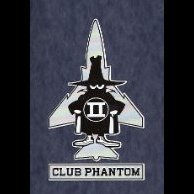
German F-86K, Neuburg AB.... FINISHED..Part 2
BradG and 2 others reacted to Daniel Leduc for a topic
Hey everyone, you can call this one done...... Had to cut short on a seated pilot to finish on time, So there it is, not a perfect set-up but was easier for me and the natural light was better this week-end, hope you'll like it. Will try to get e few more photos shortly and will need to put the Turbo on my Lightning built to have it done on time too...... Thanks for watching and have fun, Dan.3 points -
It is, it really is, and there's always another kit to tempt. Thanks for posting Jan.3 points
-
Oh damn, just when I thought I had all the kits I need!! Isn't that just beautiful!!3 points
-
3 points
-
Welcome to the forums! I can also highly recommend this site, which is a specialty mask site devoted to mask cutting, mask making and the machines that do the cutting. https://www.scalemodelpaintmasks.com/index.php?/discover/unread/ There are a lot of nice posts on the site and a lot to learn. Mask cutting has changed the modeling landscape for me personally. These days I just about never worry about getting a kit because it doesnt have any decals I like.3 points
-

Teutonic Starfighter
F-4Phanwell and 2 others reacted to Madmax for a topic
Thank you Lothar, Brian, Joachim, Marcel and Mark - you guys are very kind indeed! Rich, I cut pretty thin strips of Tamiya masking tape (probably less than 1mm) from the sides of the tape so I have one true edge. The handles are painted black or yellow, then masked in a spiral and sprayed the other colour. Takes some time, but very effective. I used to hand paint them, but it never achieves the desired look. This has been a relatively quick build for me, and very satisfying. Here is a link to the RFI post, and one or two photographs as a foretaste. Thanks for joining in the fun. Sean3 points -
It's been a long time since my last update. I'm still around but as usual, during the summer months my mind/attention starts drifting towards fishing. My favorite lake is closed to boat fishing due to the pandemic so I'm not actually out fishing as much as I'd like but I'm still doing the beach fishing thing, playing around with my tackle and doing solo trips to a small private pond. The wheel wells for the Shiden Kai have been painted and glued into place. Prior to this, I took the trouble of scrubbing the wings to try and remove as much of the wash and sanding dust from the panel lines and rivet lines. And then I glued the upper wings onto the bottom wing half. I'll spend some time cleaning up the joints, especially around the cannon fairings before I glue the wings onto the fuselage.3 points
-
The story of the F-104G in the Luftwaffe is remarkable in itself, never mind the awe inspiring technological advances the aircraft embodied at its first flight only 9 years after the end of WWII. Despite many hardships in operating a total of 916 F-104s over a 30 year period, the Germans showed their Teutonic resolve, and made a success of their Starfighter program. It has been very satisfying building this model, and the research that went with it has given me a better perspective on the much hyped "Widow-maker". It is a beautiful aircraft to look at, and regardless of some typical Italeri niggles, the kit captures the lines very well. I eventually chose to build one of JaboG 31's "Jagdbomber(s)", as that was the primary role of the Luftwaffe's F-104G's. Should you be interested, here is a link to the build thread: For a change, I think I should just let the photo's tell the story... Cheers, Sean2 points
-
1/32 Fokker Dr.I from Meng
DAK66 and one other reacted to Dave Williams for a topic
Really? The review seems to say it’s not much better that the Roden kit, and it seems like the reviewer is pushing the narrative that Meng took a great WNW and made “egregious errors” in their rush to get it out.2 points -
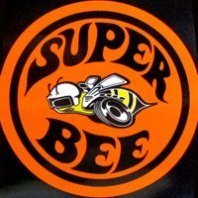
1/32 Fokker Dr.I from Meng
phasephantomphixer and one other reacted to D Bellis for a topic
The kit reviewed on WWI Aircraft Models: https://forum.ww1aircraftmodels.com/index.php?topic=11456.0 D2 points -
Not my best effort.And the shades of green are most likely not correct. But...I like it. Let's call this my practice build for the 24 th Airfix Emil later.2 points
-

2nd Mitsubishi J2M3 Raiden, Lt.Susumu Itoh, 302nd Kokutai
Rick K and one other reacted to Miloslav1956 for a topic
According to my information, MRP is just waiting for the opinion of an expert who received samples of all colors. It takes a long time, in addition, delivery was delayed, malfunctioning airmail, at the time of the pandemic. In fact, MRP would like to sell a Japanese set, but the expert must approve the colors and especially describe the names as they should be. When it goes on sale without this, there are many critics who do not understand it much, but like to talk about everything. Hold on, everyone, the colors are worth it.2 points -

Intake painting
Lothar and one other reacted to Starfighter for a topic
Paint intake white with your airbrush, let dry, then dip the the intake lip into the appropriate colour.2 points -
RAF FG.1 XV571 WILD HARE Phantom Conversion
Coneheadff and one other reacted to Anthony in NZ for a topic
Yes, shame I am not using a lot of it..... Ok, the keel line appears to be the same. Here is a capture from the Wings of Pegasus website Thanks guys Anthony2 points -

Silhouette or Cricut plotter/cutter.
scvrobeson and one other reacted to MikeMaben for a topic
Hey M , there are so many https://www.youtube.com/results?search_query=silhouette+cameo+4 Have fun.2 points -
I got the tops of the outboard wings riveted and then had to deal with the infamous uneven wing to fillet gap. Filling this seam, sanding and re-scribing isn't something I'm very comfortable doing, especially the scribing part. I suck at scribing. A lot is made of this gap flaw and if you’re going for good basic construction, it has to be fixed. Please note that this is my mule and the rivets that are missing have had to be sanded off. Quite by accident I discovered that Tamiya white putty won’t stick to clear Scotch tape - the glossy stuff, not the frosted which I haven’t tried. So I put the tape on the fuselage and filled the gap with the Tamiya putty. I let this set overnight and the next day I flexed the wings down very slightly and the putty popped right off the tape leaving this. Here’s what I got after sanding the excess putty off the top of the wing. Not much penetration, but enough. After several test fits the putty did not chip. It’s a lot stronger than I thought. Moving from the mule to my model now, you can see the gap is closed now, and to my eye looks just fine. The gap at the trailing edge closes up when I suspend the model from the wingtips and put a LITTLE weight on the fuselage. Some super-thin and Perfect Plastic putty should finish this off nicely. Next step will be to glue the wings to the fuselage. Also been trying to figure out how best to mount the dive flaps in the closed position, but pretty sure it shouldn’t be too much of a problem to solve. Thanks for looking.2 points
-
Some more work on the cockpit, this time the side panels and the instrument panel. ScaleWorx provide the resin IP for the Cheetah E. I used the Italeri instrument panel decal and punched out individual instruments. The artificial horizon is from an Airscale 32nd cockpit instrument sheet. Data placards were added, again using decals from Airscale 32nd scale cockpit placards. These Airscale cockpit decals are great and add much to the interest level of the cockpit, especially in 32nd scale. I also added the two levers either side of the IP. I think one is the drag chute release handle and the other hand brake ? Nick / Sean to correct me please... : IMG_6035 - 800 by Malcolm Reid, on Flickr IMG_6038 - 800 by Malcolm Reid, on Flickr IMG_6055 - 800 by Malcolm Reid, on Flickr IMG_6056 - 800 by Malcolm Reid, on Flickr IMG_6058 - 800 by Malcolm Reid, on Flickr2 points
-
In the photo of 842 above, you can just discern the reinforcing strip around the intake blow-in door. This was part of the structural reinforcement for the intakes to take the loads imposed by the canards - I replicated this with thin plastic card which was sanded down to an appropriate scale thickness : IMG_6061 - 800 by Malcolm Reid, on Flickr The whole forward fuselage treated to a nice coat of Tamiya grey primer to show up any defects : IMG_6063 - 800 by Malcolm Reid, on Flickr Resin intake loose fitted - just checking. This will only go on once the wings have been attached to the fuselage : IMG_6069 - 800 by Malcolm Reid, on Flickr The mid dorsal fuselage area where the moulding step was - treated to Tamiya light curing putty and sanded smooth - no sign of the step left : IMG_6064 - 800 by Malcolm Reid, on Flickr Here you can see the shortened length of the Mirage IIIE / Cheetah E intakes versus the longer kit boundary layer bypass ducting walls which are sticking out - simple work to cut these shorter : IMG_6047 - 800 by Malcolm Reid, on Flickr Each intake has three prominent reinforcing rods between the intake inner surface and the adjacent fuselage - similar for the Mirage IIIE and Cheetah E. This is the centre rod glued into a hole drilled into the intake inner surface. The other two will be installed once the intakes have been glued in place : IMG_6072 - 800 by Malcolm Reid, on Flickr2 points
-
Edging closer to the finish line but I'm not going to make it I'm afraid! Stencils cut on the Silhouette for the serials: applied and done: Identifying letter on the tail and various wing markings: But here's the canopy dilemma! You can see just how wrong the Trumpeter canopy looks, kind of "over inflated": But the kit vac formed one is yellowed, and the one with the second Echelon Lightning has a slight crease in it. This may come out with the inner canopy lining: I'll get there in the end!2 points
-

New Group Build starting next month; Training Day....
Rick Griewski and one other reacted to R Palimaka for a topic
I think I would like to give this GB a try. I've been wanting to do a camouflaged Polish SBLim-2 (MiG-15UTI equivalent) from a conversion of the Trumpeter Mig-15 spliced with a tandem canopy/cockpit of the Trumpeter FT-5: but there is also this CT-155 Hawk, which won't require chopping up two kits and should be less stressful. It is a training aircraft but also a special scheme to commemorate the 75th anniversary of the formation of 419 Squadron RCAF. Richard2 points -
I reckon. I put in a bit of time this weekend. Some of the silvering repaired unfortunately, and I tried to deal with it as best I can wit the airbrush, but oh well.2 points
-
Hello I have been following this forum for a couple of years now and decided is was time I contributed some of my work to this community. Maybe in the future I will post my work in the "work in progress" section. But I'm a bit lazy when in it comes to taking in progress pics and posting them. So as a first some pics of my Kitty Hawk F-86D. I build this kit a couple of years ago and build it straight from the box. I made some stencils to spray the red/white markings and the big block of text. And this is also to test the use of Google photos to post the pics. So here it goes. So hopefully this works. Regards, Eric2 points
-
.thumb.png.84c5d3a464f2dd83f0ac37a5aac81ec8.png)
1/32 Bf 109E Adolf Galland
TAG and one other reacted to Antonio Argudo for a topic
I printed the "Mickey Mouse" on decal paper, cheers2 points -
.thumb.png.84c5d3a464f2dd83f0ac37a5aac81ec8.png)
1/32 Bf 109E Adolf Galland
Dany Boy and one other reacted to Antonio Argudo for a topic
some 04 cheers2 points -
.thumb.png.84c5d3a464f2dd83f0ac37a5aac81ec8.png)
1/32 Bf 109E Adolf Galland
Dany Boy and one other reacted to Antonio Argudo for a topic
some decals and a mottling pass cheers thanks for watching!2 points -
.thumb.png.84c5d3a464f2dd83f0ac37a5aac81ec8.png)
1/32 Bf 109E Adolf Galland
Dany Boy and one other reacted to Antonio Argudo for a topic
one of the few color pictures of Galland's 109's2 points -
Decals finally finished. Well, finally applied, as these still need a bunch of work blending them in to the paint. After I get that done and everything sealed, I'll start a bit of weathering.2 points


